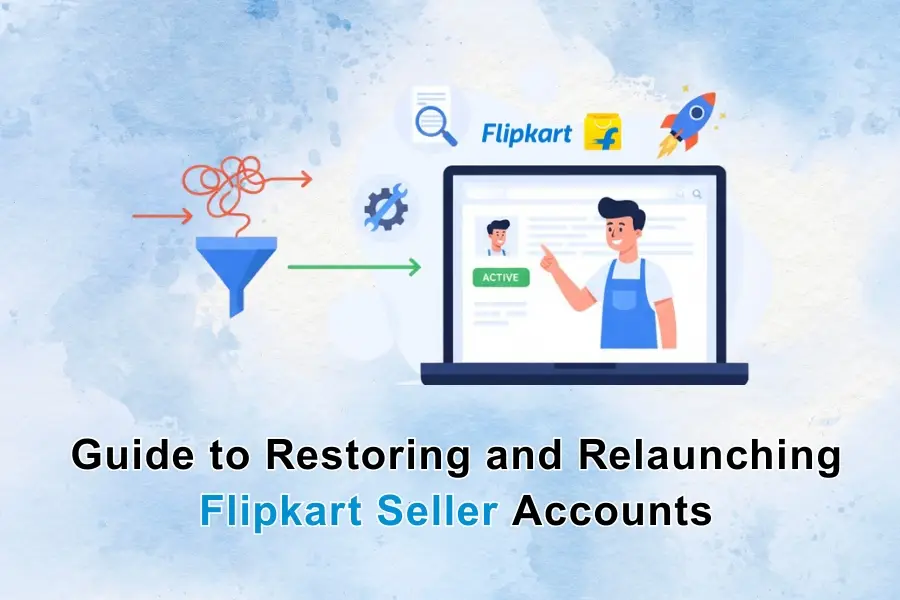How to Start an E-Commerce Business: The 2023 Guide

Starting your own e-commerce business is a wonderful venture, especially if you've dreamed about the freedom of being your own boss in a business. If you're crafty or have a knack for selling, the entrepreneurial route could be a great option for you.
Getting the business on the ground of e-commerce is a difficult task. It takes business acumen, creativity and discipline to take the necessary steps to get your idea out to the public. But it can be a very worthwhile and rewarding journey for a business. Global e-commerce sales are set to reach approximately $5.7 trillion in 2022, and according to the US Census Bureau, e-commerce is expected to account for 14.8 percent of total sales by September 2022. There are immense possibilities of profit from e-commerce.
In this article, we provide a step-by-step guide to starting your own online business, including costs and tips for success.
How to Start an E-Commerce Business
E-commerce is on the rise so you have to consider how to stand out as everyone can use digital marketing for their business. Despite the competition, there is a bright future ahead for e-commerce entrepreneurs on e-commerce platforms. Here's how to get started.
Step 1: Research the E-Commerce Model and Decide What to Sell
The e-commerce space today is vast, with a lot of competition, so it's important to consider what your e-commerce business model will be. There are four basic types:
Business-to-Consumer (B2C): A common business model, in which a business sells anything from spices to shoes to consumers. B2C brands may sell different brands under one umbrella, such as Amazon, Flipkart, and Meesho.
Business-to-Business (B2B): In the B2B model, businesses sell products or services to other businesses. Orders are recurring purchases. Examples include Amazon Business, Flipkart and Meesho.
Consumer-to-consumer (C2C): The C2C model is an online marketplace that connects consumers for the exchange and sale of goods and services. Online C2C businesses include Craigslist, Etsy, eBay etc.
Customer-to-Business (C2B): With C2B, a seller sells his goods and services to companies. A good example is a novel web solution that enables businesses to reach their customers.
Step 2: Write a Business Plan
After you have established the foundation of your business, you are ready to draft a business plan. This written document accurately describes your objectives and roadmap for finance, operations and marketing. You can use this to get organized and attract potential investors.
Do some research to find out the current competitors and market landscape for your product or service. Novel Web Solution Help you to determine your target market and how you can sell to them. Plan logistics, including when, where, and how you'll be moving in the coming months.
Step 3: Choose a Business Name and Start Building a Business With a Brand
Next, your business needs a name and brand for a unique identity. For those starting a white-label e-commerce business, the brand is especially important to the success of your business.
Choosing a business name can be fun, but it does require some strategic thinking. In addition to a unique yet simple name that clearly describes your product, you'll also want to check whether web domains, social media handles, and legal names are available. Do your research to make sure it translates well into all cultures, especially if you want to go global.
In building your brand, you will need to design a logo that will be placed on all packaging, website design and marketing materials. Eventually, you may want to hire a designer who can translate your brand's ethos into beautiful web visuals.
Step 4: Register Your Business
Before you start selling, you need to register your business by choosing a legal framework, applying for the Goods and Services Tax (GST), and obtaining other permits and licenses specific to your chosen business model.
Once you decide on a business name, consult the local secretary of state and the Indian Patent and Trademark Office website to make sure your business name is available. You'll need to choose your legal structure, a business entity type that will determine the legal and financial guidelines of your online business — typically; you can choose from a general partnership, LLC, corporation, or sole proprietorship. Consider consulting a legal professional to ensure the right option for your business.
After you've received your GST, check what other business licenses and permits you need to operate in your city and state. Many e-commerce businesses are home-based, so they don't need as many licenses as brick-and-mortar stores, but you may need a home business permit that states your business won't contribute to traffic or noise. Does. Your business registration requirements will vary depending on your state, industry and type of business.
Step 5: Build Your E-Commerce Business Website
After the paperwork is signed and your business is officially registered, the next step is to create an e-commerce website. The website is the "storefront" for your business where customers can visit, browse, and place items in their shopping carts. Your business website and its functionality are critical to your success.
To get started, you'll need a domain name that matches your business name. Then, you'll choose an e-commerce platform that best suits your bandwidth to build and maintain an online store. The two most common types are all-inclusive software (such as the Novell e-commerce platform) and open-source platforms on which you'll perform business operations such as inventory management, shipping orders, and more.
Step 6: Source and Develop Your Products or Services
Once you have set up a prototype of your website, you can start adding your product names, descriptions and photos. You'll also need to source your products, whether that means going into production to develop them or getting them from a wholesaler.
If you're a crafter, you'll want to build up enough inventory to last you the first few months. This could mean making one of each color and size of the clothing line, or twenty of each ceramic pot. This number will vary based on your labor bandwidth and your marketing strategy, such as how much traffic you are driving at the launch of your website.
Then, you have to arrange for logistics like branded packaging, warehousing, inventory management, and shipping.
Step 7: Launch and Market Your Business
Once you've successfully launched the business, you can begin monitoring your metrics and key performance indicators (KPIs) as your business grows. Novel Web Solution helps you to drive traffic to your brand. We are an authorized partner of online e-commerce platforms like Amazon, Flipkart and Meesho. We provide you the best e-commerce services to drive traffic to your brand.
Between inventory management, logistics, and marketing, you'll want to make sure your shipping and fulfillment runs smoothly for every customer. For this you can take the services of Navel Web Solution.
Novel web solution to help you grow your business online Provides services of account management service, product listing, product optimization






